Sigma DP1: a look to the Foveon sensor
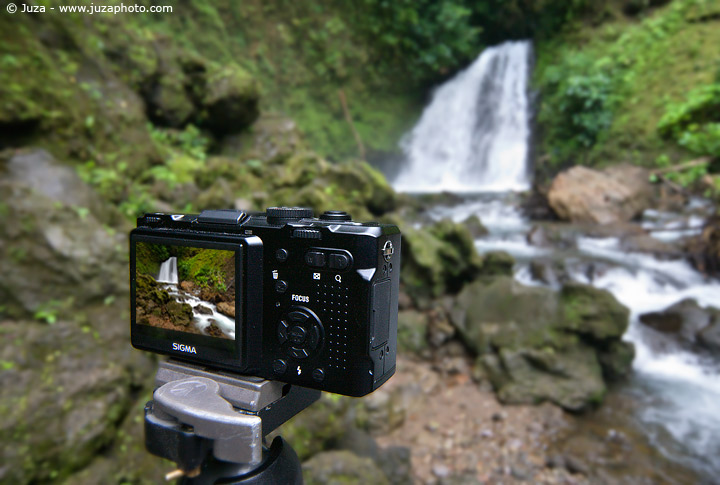
In the Costa Rica trip (November 2008), for the first time I have taken with me a second camera, other than my workhorse Canon 1DsIII. My second body has been the Sigma DP1, one of the most interesting compact cameras on the market: what makes is so special is its sensor, an APS-C Foveon CMOS, much bigger than the sensor of all other compact cameras. In other words, the DP1 has the hearth of a SLR into the body of a digicam!
The Sigma DP1 is different from all other digicams, and for sure it is not a camera for everyone. It is expensive, it has a prime lens (28mm equivalent f/4) with no image stabilization, it is quite slow and it has a very limited movie mode: if you are looking for an all-around digicam for family photos the DP1 is not the camera for you.
If, instead, you want the maximum image quality, a sharp lens with minimal optical aberrations, RAW, and a well built camera body with complete manual controls, the Sigma DP1 may be a good choice. The first thing that I have noticed, looking at the camera body, is its minimalist design. There are few buttons, and on the main dial there are only the "creative" exposure modes (Program, Aperture priority, Shutter speed priority, Manual), plus a single automatic mode, video mode and audio recording. It has not the 20-30 scene modes that are now the standard in most digicams - and this is a great plus in my opinion; scene modes are just gimmicks to attract unexperienced photographers...if you have some experience, you will know that P, S, A, M are all you need to have complete control on the exposure.
Other than that, the Sigma DP1 has a well thought menu interface - it is very intuitive, you won't need to check often the user manual to understand how it works.
Main Camera Specifications
����| � | � � |
�
| �Camera | � �Sigma DP1 |
�
| �Image sensor | � �4.5 megapixel APS-C CMOS Foveon sensor |
�
| �File format | � �RAW (2640 x 1760 pixels, approx 14 MB .x3r files), JPEG |
�
| �Color space | � �Adobe RGB, sRGB |
�
| �Viewfinder | � �optional; LCD screen is used to compose the image |
�
| �Autofocus | � �9 AF points |
�
| �Exposure modes | � �Auto, program, aperture priority, shutter priority, manual |
�
| �ISO sensitivities | � �ISO 50-800 |
�
| �Exposure compensation | � �+/-3 stops in 1/3 stop increments |
�
| �Shutter speeds | � �15" - 1/2000 |
�
| �X-sync | � �all shutter speeds |
�
| �Continuous shooting speed | � �3 FPS |
�
| �LCD screen | � �2.5", 320x240 pixels |
�
| �Support | � �SD/SDHC Memory Card |
�
| �Battery | � �One dedicated lithium-ion battery BP-31 |
�
| �Weather sealing | � �No |
�
| �Dimensions (W) x (H) x (D) | � �113 x 60 x 50mm |
�
| �Weight Body only) | � �250g without battery |
�
| �Price | � �$ 680 |
�
| �Announced | � �2006; in production from march 2008 |
�
| �Other features | � �240x320px @ 30 FPS movie mode� |
�
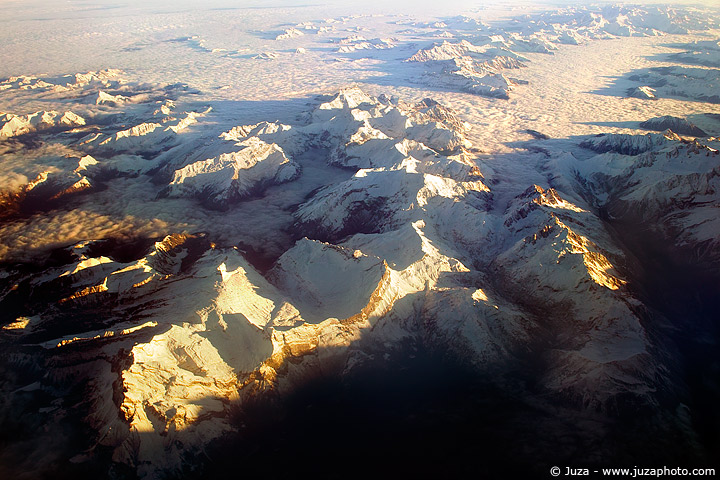
Alps at sunrise. Sigma DP1, Sigma 16mm f/4 fixed lens, 1/250 f/4, iso 100, handheld. Italian Alps.
What is inside: Foveon Sensor
All compact digicams have very small 1/2.5" or 1/1.8" sensors: the Sigma DP1, instead, manages to squeeze an APS-C sensor (the same used in the Sigma SD15) into a compact, lightweight body!
The DP1 has a Foveon sensor. Foveon is a small, and innovative, company that has recently been bought by Sigma; they manufacture an unique sensor design, that has three full color layers, instead of a single layer with alternate rows of red, green and blue pixels. This approach results in images with lower pixel count (the DP1 gives 4.5 megapixels images), but with a fantastic sharpness and detail. In my experience, the resolution of a Foveon sensor can be compared with a Bayer sensor with about twice the pixel count: in other words, the 4.5 megapixel DP1 photos have the same resolution of a 9-10 megapixel photo captured with a "traditional" bayer sensor. (for more details and in-depth explainations, I recommend to visit
www.sigma-dp1.com, or to download the
Sigma DP1 brochure )
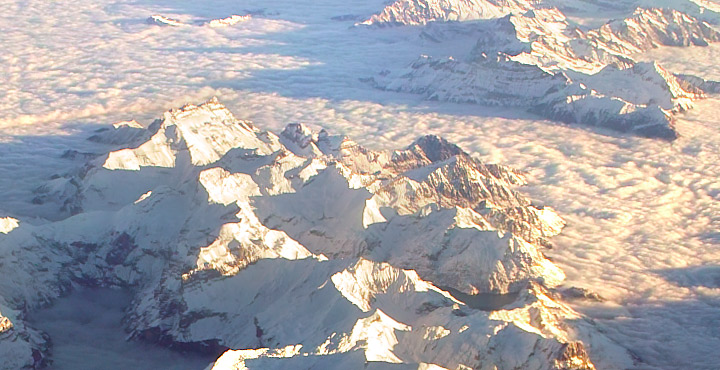
100% crop from the previous photo. The sharpness is fantastic (and you have even to consider is it taken from a plane!)
Sigma DP1 vs...
I have compared the Sigma DP1 with three other cameras: the digicam Canon SX100 IS (8 megapixel, 1/2.5" bayer sensor), the old Canon EOS 350D (8 megapixel, APS-C bayer sensor) and the top of the line Canon 1DsIII (21 megapixel, FF bayer sensor).
I have taken the same photo with all the cameras, at ISO 100, 400 and 800. The cameras were mounted on tripod; I have taken the photos in RAW format (except for the SX100, that has only JPEG) and I have converted them with Adobe Camera RAW, without any post processing. The photos of the DP1, SX100 and 350D had been interpolated to 21 megapixel, to match the 1DsIII for this side-by-side comparison.
����| � | � �ISO 100 | � �ISO 400 | � �ISO 800 |
�
| �SX | � �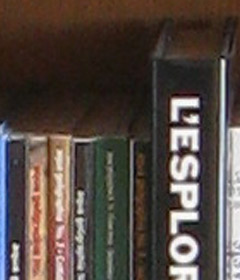 | � �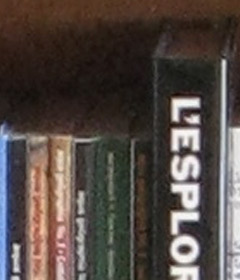 | � �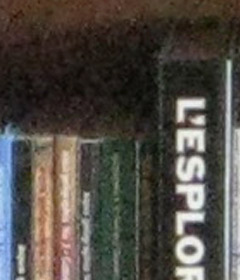 |
�
| �350 | � �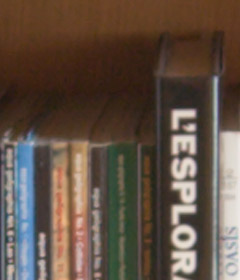 | � �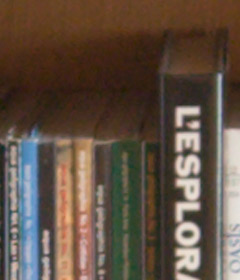 | � �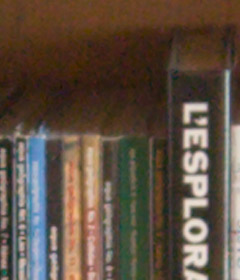 |
�
| �DP1 | � �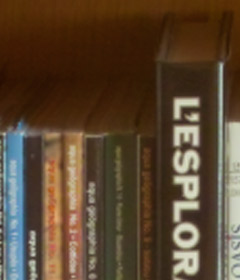 | � �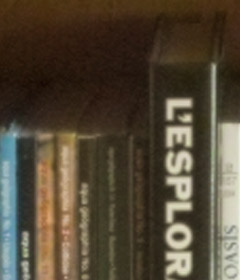 | � �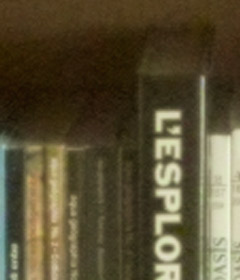 |
�
| �1Ds | � �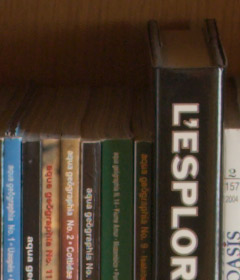 | � �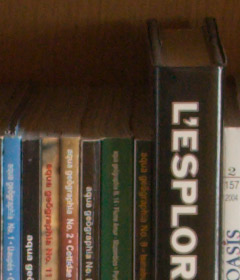 | � �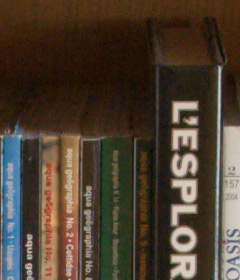 | �
�
The results are very interesting. The small sensor of the Canon SX100 has cleary worse noise performance than all the other cameras, and it captures less detail of the 350D, even though both have 8 megapixel sensors. Other than that, keep in mind that the SX100 photo has already been enhanced by the in-camera unavoidable processings, so it looks more colorful and contrasted than the other photos.
What is truly amazing is the performance of the DP1 at ISO 100 - the 4.5 megapixel Foveon sensor captures clearly more detail than the 8 megapixel Canon SX100 and Canon 350D; it has not the detail of the 21 megapixel 1DsIII, but it is surprisingly good. I'd say that at ISO 100 the Sigma DP1 (and the other Sigma cameras that share the same sensor) is able to offer the same resolution of a 10 megapixel bayer sensor camera!
At 400 ISO, the DP1 is about on par with the Canon 350D in terms of detail and noise, while at 800 there is a visible loss of detail - in terms of high ISO capabilities the Foveon still needs to improve, even though it is better than many small-sensor digicams.
Image gallery and crops
These are some photos that I have taken with the Sigma DP1. All the photos had been converted and processed with Adobe Photoshop CS3; you can see 100% crops to evaluate the detail.
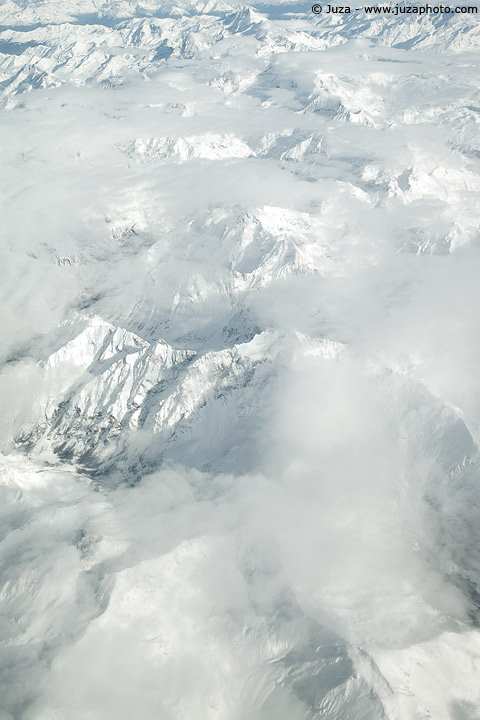
Snow and clouds. Sigma DP1, Sigma 16mm f/4 fixed lens, 1/1000 f/4, iso 100, handheld. Italian Alps.
100% crop from the previous photo.
Waterfall. Sigma DP1, Sigma 16mm f/4 fixed lens, 1/6 f/8, iso 50, tripod. Costa Rica.
100% crop from the previous photo.
Above the clouds. Sigma DP1, Sigma 16mm f/4 fixed lens, 1/320 f/4, iso 200, handheld. France.
100% crop from the previous photo.
Iguana. Sigma DP1, Sigma 16mm f/4 fixed lens, 1/125 f/4, iso 200, handheld. Costa Rica.
100% crop from the previous photo.
Conclusions
The Sigma is a specialistic camera, that will satisfy a certain group of photographers. If you are interested in landscape and reportage, and you want the ultimate image quality that can be found in a compact camera (at least at ISO 100 and 200) with full manual controls, you will be satisfied by the DP1. Its sharp, super detailed and super noise free images at ISO 100 are a joy for the eyes; it is not great at high ISO, but for sure it is fully usable up to ISO 400.
I'm going to bring with me the DP1 in all my landscape trips, and I'll publish my experiences and the resulting photos on JuzaPhoto!

















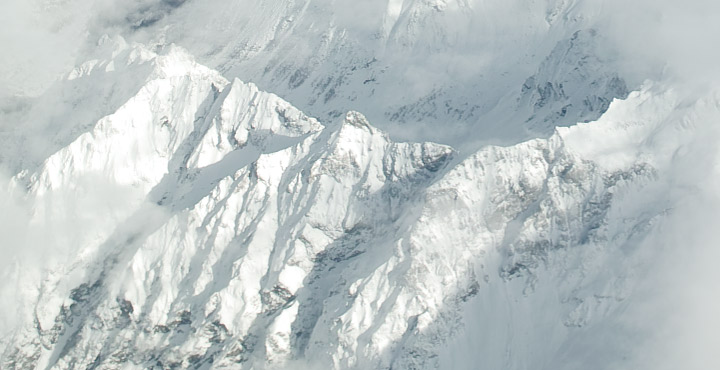
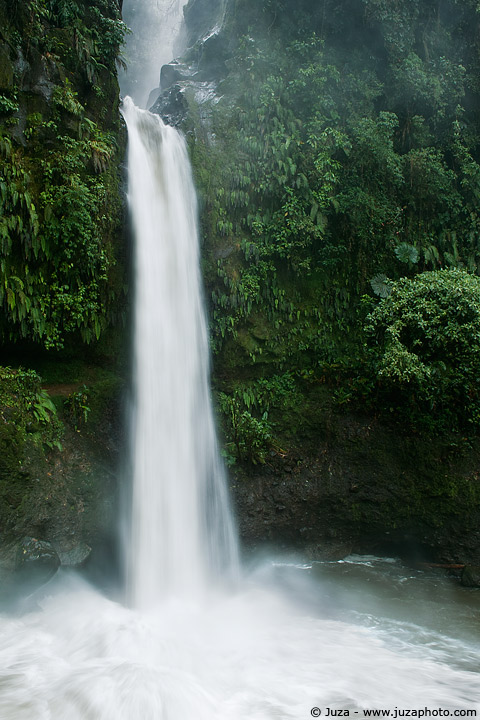
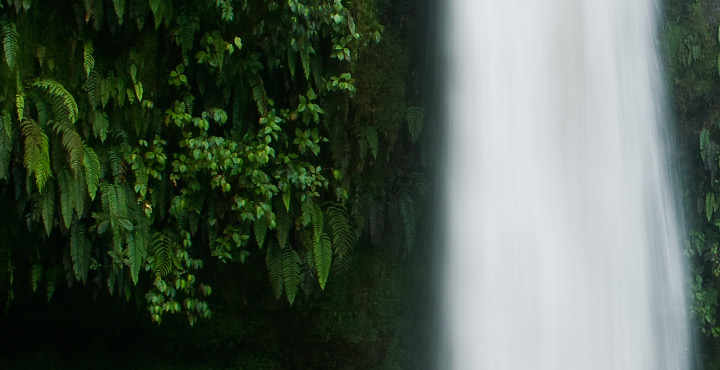
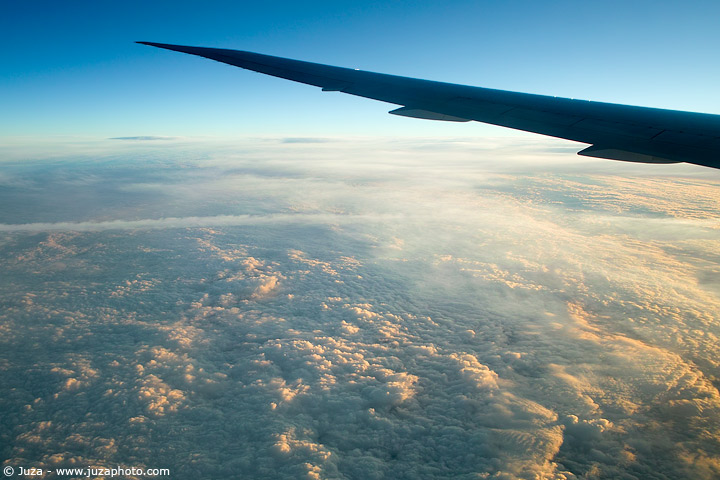
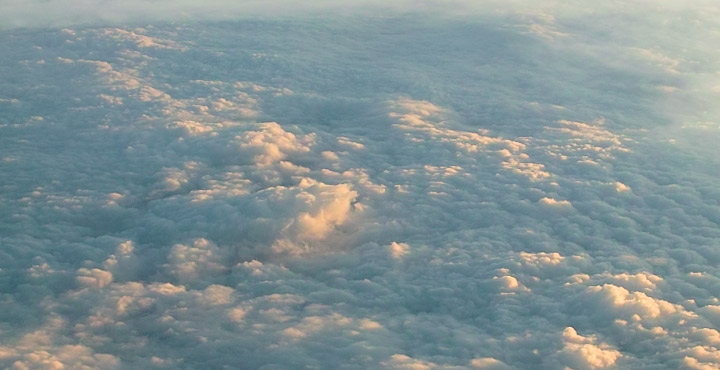
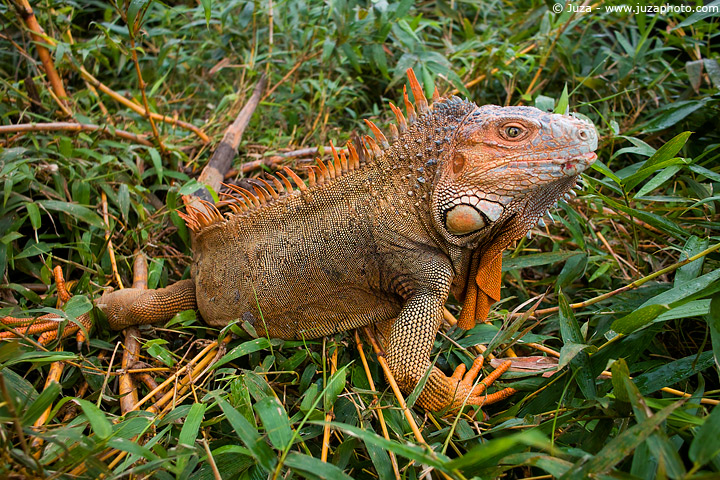
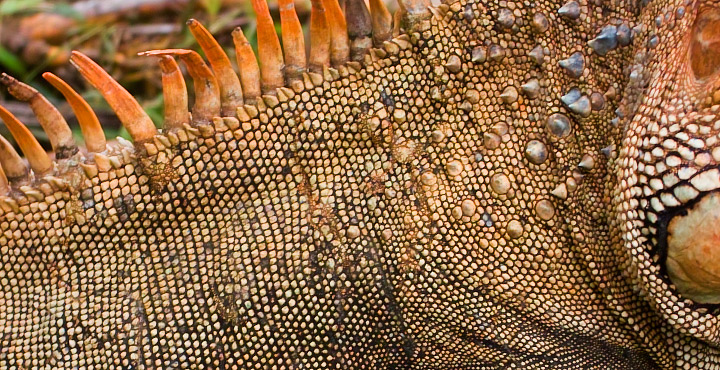
 JuzaPhoto contains affiliate links from Amazon and Ebay and JuzaPhoto earn a commission in case of purchase through affiliate links.
JuzaPhoto contains affiliate links from Amazon and Ebay and JuzaPhoto earn a commission in case of purchase through affiliate links.